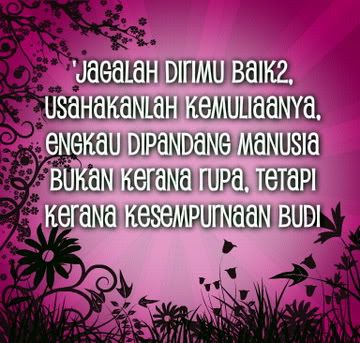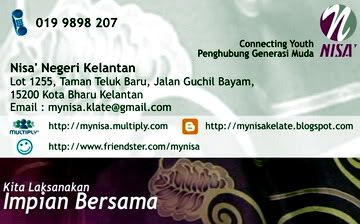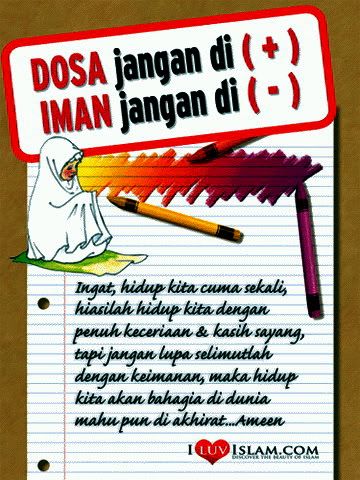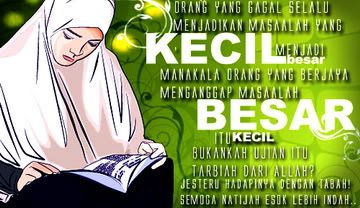ACADEMIC WRITING
Definition of Autism
There are many types of learning disability in this world. For example, down syndrome (ADHD), hyperactive, cerebral palsy, and dyslexia. The others types of learning disability is autism.
. The National Institute of Neurological Disorders and Stroke (NINDS) defines autism as a developmental disorder “characterized by impaired social interaction, problems with verbal and nonverbal communication, and unusual, repetitive, or severelt limited activities and interests.” Based on the Autism Society of America (ASA), autism means a complex developmental disability that typically appears during the first three years of life. Moreover, the ASA also includes that autism is the result of a neurological disorder that affects the normal functioning of the brain, impacting development in the areas of social interaction and communication skills.
Types of Autism
Autism is characterized by so many different types. The types of autisms are Autistic Disorder, Rett Disorder, Asperger’s Disorder and other Pervasive Developmental Disorder (PDD). All of them have been grouped together on the Autism Spectrum. The Autistic Disorder is defined as the above while the Asperger’s Disorder is known when the individual having a lacks delays in cognitive development and language. The Pervasive Developmental Disorder is defined as the children who have many of the same characteristics of Autism. And the Rett Disorder is known when the children begin to develop on target but the begin losing some communication abilities. It is usually happens between ages of 1 to 4 and only occurs in girls.
Autism mostly happened when the individual has a strong genetic basic. The Autism Spectrum Disorder (ASD) is explained more by rare mutations or by rare combinations of common genetic variants. Moreover the ASD had also been caused by a controversies surround other proposed environmental. For example, heavy metals, pesticides or childhood vaccines. While, based on the research made by the scientists, they found that abnormal levels of neurotransmitters in the brain which is call Serotonin can make the individual have this learning disability.
The Characteristics of Autism
The ASA had found that most of the children with Autism are commonly have these characteristics. Firstly, they are unable to coo and does not point or gesture by the age of 12 months. Secondly, they do not say single words by 16 months and still do not say 2 or more words by 24 months. At last, the children have lost some of social skills or language abilities. The above statement can be proven by the analysis of the article from Paul Madaule (article number 1). He had stated that the child named Jennie was acting as if she was deaf. Jennie didn’t respond to her name, she never babbled and she never started talking.
Moreover, the children with Autism usually can be detected by looking her or him eye contacts. They may avoid eye contact with someone who is talking with them. The Autism’s children have difficulty expressing what they want or need. Based on the article by Mr. Hagney (article number 2), he had wrote that when he asked the girls what they wanted to do next, both of them just walked off to play by themselves without looking him and answering his question.
Besides, the autism children can be known when they have no fear of danger or may exhibit self injurious behavior when upset. It might be happen because their nerves are not wisely function. This statement can be proven by the analysis from the article number three which stated that the autism is also a sensory integration disorder. For example, when the hand of children is bleeding, she never feels it. This is because she does not know on how to express the feeling or it happens because she has a problem with her nerves.
The next characteristic is they may have inappropriate attachments to objects. The article from Paula Kluth (article number 5) which the title is Teaching Students with Autism in the Inclusive Classroom stated that some student was having difficult to find materials, keep their locker and desk areas neat and remember to bring their assignments home at the end of the day.
The other characteristic is they may insist on things or routines always being the same. Wing (1995) in the article (number 4) published by Autism Victoria (2005) said that the students with an autism spectrum disorder often become distressed when there is a change in routine, due to their difficulties making sense of time. He also stated that they rely on thing occurring the same way to make sense of confusing world.
The next characteristic of autism is the obvious characteristic which is due to the core difficulties of social interaction and sensory processing. In the article number 8 which the title is Autism Behavior Supports Tip had stated that most of the autistics children have difficulty understanding social cues and situations. The article titled Focus on Education-Teaching a Student with ASD (2005) also said that many students are unsure of how to interact with their peers, how to join a game or activity, and how to follow the rules of the games other students play.
The autistics children are also having the problem in reading which one of their characteristics is. The article titled Teaching Autistic Children Reading Skill (article number 7) stated that most of them have problems with figuring out the rules of reading and grammar when compared to children who do not have autism. In the article number four also stated that the student may not pick up intuitive thing like beginning at the start of a text or at the first of the question, reading information and approaching task one at the time in order.
Based on the characteristics above, the autistic children are having problems in listening, speaking, reading and writing. So, here there are some suggested strategies that can be used to solve the problems. The strategy can be used twice either in speaking or reading.
a) Listening
The most and famous strategy had been using for autistics children is by listening to the music. The music therapist, Dorita S.Berger, said that music may “even have preceded language in human’s need to communicate and seek solace for an agitated mind and body”. Mr. Hagney (2008) in his article also said that music is a unifying for all human beings. And Bernad Rimland in Mr. Hagney’s article had given the statement that a keenness and talent for music is considered part of autism’s diagnostic criteria. Many therapists now believe that music can help conquer sensory processing difficulties in a person with autism. The technique to apply is by doing the following steps:
1. The teacher or parents should know the favourite music of him or her.
2. Allow her to sing that song. If the child does not giving any respond, the teacher should asked her parents or make an observation on her. For example, what is the song that she loves to sing in class or at home?
3. After singing the song, the teacher can asked her to repeat the lyrics of the song. For example, if she loves to sing a song of “Twinkle, Twinkle Litter Star” you can use one of the lyrics as a word for her to learn.
4. You may ask your student to repeat the word that you say. For example, the teacher says “star” than the student repeats it.
The suggested technique above is actually similarly with the technique that had been used by the Mr. Hagney. The dialogue below proved that Mr. Hagney used the above steps:
“What’s your favourite song, Janet?”, I asked hastily.
“My favourite song is ‘Twinkle, Twinkle Little Star’, Ana”, Janet replied in her articulate way.
“Well what about Heather? What is your favourite song?”, I asked grabbing the quiet girl’s attention.
“Twinkle. Twinkle Little Star!”, she answered with a glimmer of excitement on her face.
“Wow, so both of your guys’ favourite song is “Twinkle, Twinkle Little Star” then.
“A-na, can we sing it, please.”, Janet inquired.
So, we sang it together, twice, as a group. Enjoyment shone on the girls’ faces, and after we sang we talked about or favourite music and instruments.
Analysis from the article by Mr. Hagney (2008), Listening to Autism: Music as and Effect
More over, the activity also can be done together with the music to improve the attention of the autism students. Dr. Myra J Staum, the Director of Music Therapy at Willamette University suggested that playing an autistic child’s favourite song can help in force social behaviours.
“Like sitting in chair or staying in a group of other children in a circle”, said Staum.
b) Speaking
The strategy to solve the problem among autism children is by doing the same strategy as listening. Commonly, the listening will join with speaking. But there is still another strategy that can be used to occur it. Paula Kluth (2005) said that although early intervention can help autistic children gain self-care, social and communication skills, there is no known cure. So, here are the tips or technique to solve it:
1. Learn about Learner from the Learner
This technique needs the student to take a short survey or sit for an interview. After the teacher had asked the student, the teacher should create a list of teaching tips that might helps kids with learning differences.
2. Support Transitions
Paula Kluth in her article titled 10 Ideas for Inclusive Classroom had stated that teacher can provide the student or entire class with a transitional activity such as singing a short song about “cleaning up”. Furthermore, the teacher can also give the student a transition aid and ask them to name it for example,
3. Focus on Interests
This technique is commonly uses when the children are in the beginning of the learning process. Paula Kluth suggested that educators should use interests, strengths, skills, areas of expertise and gifts as tools for teaching. It can be showed clearly by the following sentences:
One of my former students, Patrick, had few friendships and seldom spoke to other students until a new student came into the classroom wearing a Star Wars tee-shirt. Patrick's face lit up upon seeing the shirt and he began bombarding the newcomer with questions and trivia about his favorite film. The new student, eager to make a friend, began bringing pieces of his science fiction memorabilia to class. Eventually, the two students struck up a friendship related to their common interest and even formed a lunch club where students gathered to play trivia board games related to science fiction films.
Analysis from the article by Paula Kluth (2005), 10 Ideas for Inclusive Classrooms.
Besides, Dr. Tomatis in his article (Autism: What it is?, article number 3) suggested that the vocal exercises are key in trying to achieve that goal. This strategy can be done by using a microphone. Usually, the autism children will afraid for the first time when they heard their own voice. But when this vocal exercise is going on smoothly every day, they will adapt it. At last, they can start communicate with their friends or people surrounding. Dr. Tomatis also said that by giving them the ability to produce sounds in controlled way, we open the way for them to develop their sense of self. It means that the teacher or parents have to make sure that the autism children:
a. Expanded articulation of words
b. Increased expressive language
c. More developed receptive language
d. More sharpened listening skills
e. Better voice control
f. Growing sense of self develops
g. Deeper awareness of the whole body
While Paul Madaule had his own suggested method. As we know that the child with autism has the poor regulation of their sensory system. So, when talking to them, the teacher may hold her hand, or massage her feet while exaggerating her facial expression to obtain eye contact.
c) Reading
Usually, when the children is sending to school for the first time, most of them do not know how to read. The teacher always has the problem to teach them because the autism students have a difficulty in eye contact with the others. So, the teacher should know on how to teach them read.
The important thing that the teacher should remember when teaching an autistic children is that most reading requires creative thinking. It means that the teacher has to know their interests. If the student like to play with ball, the teacher can use as the teaching aids. But it will be more useful if the ball is used as their gift if they can achieve one level of reading or the can improve their skill on reading. It can be done by showing the token economy to the children. The teacher has to explain and put the rules if they want to get the balls.
Besides, the autistic children can also teach through visual stimulation. From the article by Ms. Ezi, every child has a special interest and autistic children are no exception. If they like trains, the teacher may want to use them as a visual guide to learning how to read. This method can attract their attention and they will be concentrating more to what the teacher are going to teach.
Moreover, the article by Autism Victoria (2005), also gives the technique of reading. The suggested technique is providing separate scribble paper. This technique can be done through an activity. Teacher writes a word on a piece of scribble paper. Then, cut it into four or five shape. Separate them and asked the children to combine the scribble paper until the word is built. But, the teacher is reminding to give an example word on the other paper.
Furthermore, Mr. Berger in Mr. Hagney’s article stated that singing can also be an extremely powerful means of teaching vowel and consonant shapes. This statement actually tells that through music or singing, the teacher can teach the autistic children on how to read. For example, the teacher may use one of the songs in The Sesame Metret.
d) Writing
The last component is writing. This component usually will be taught together with the reading component. Based on the analysis article, the teacher should teach on how to hold pen, or pencil. The teacher should start from the basic. Then, he can use the method of therapy to learn. The teacher can also use the similar strategies with others components.
Based on the article by Paula Kluth (2003), the suggested strategy is by giving choices to the autistic children. Paula Kluth said that choice may not only give students a feeling of control in their lives, but an opportunity to learn about themselves. For the writing part, the strategy of giving choices can be offered in classroom is by using pencil, pen, or the computer.
1. Asked them to hold pencil (start with the colourful pencil)
2. Use the interesting materials or teaching aids to attract them (for example, use the colourful words)
3. Asked them to copy down the words on the piece of paper or inside the book (starts with dotted line for the beginner student)
Besides, the teachers can also use the others strategy which is giving fidget supports. Oftentimes, learners with autism struggle to stay seated or to remain in the classroom for extended periods of time. The teacher sometimes should allow students to draw freely. But, the teacher has to remember to provide a place for them to draw it. For example, give them a piece of paper or a room that had been pasted with the sketch paper (space indoors).
Furthermore, the autistic children can also teach by using simple board games. Many board games are enjoyable activities for autistic kids because they are relatively predictable and provide a routine. It can be done by using for the beginning. If the students can correctly write the vowel, she or he can continue to the next level.
While, based on the article from Mr. Hagney (2008), the music could also encourage the students to write. For example, drums can encourage the eye-hand condition. When the children enjoy listening to the music, they can start to write with their own without any forces. Oftentimes, autism loves to listen for the music. They will write only when the teacher start playing the music.
The others steps for writing is by developing the movement and multi-sensory input. Paul Madaule (2004) in the article titled “Listening Training for Children with Autism” stated that the child with autism responds best to multi-sensory of interaction because of the poor regulation of his sensory system. This step is very useful for the beginner students. The therapist or the teacher may hold her hand or massage her feet while exaggerating her facial expression to obtain eye contact. The eye contact is very important for the writing section because it will help the teacher to teach their student easily. It can be proven from the statement by Paul Madaule;
“This makes it easier for her to model what the therapist shows her to do, shaping a word with the lips or making faces for example.”
Analysis from the article by Paul Madaule (2008), Liatening Training for Children with Autism.
Based on what had been stated on the above strategies for the listening, speaking, reading and writing, the teacher can use the steps repeatedly. Sometimes, one step can help the teacher to improve or develop all the basic components. For example, from the article which the titled is ’10 Great Activities for Autistic Children’ had given examples of popular activities. It had been separated into two sections which is first indoor activities and second, outdoor activities. Here are the strategies for both sections:
1. Indoor activities
§ Singing
§ Funny Sounds
§ Castles
§ Safe Emergencies
§ Simple Board Games
2. Outdoor Activities
§ Simple Childhood Games
§ Organized Sports
§ Water Balloons
§ Skipping Rocks
§ I Spy




















0 ulasan:
Catat Ulasan